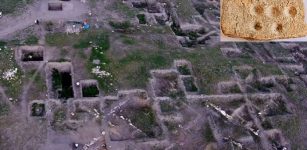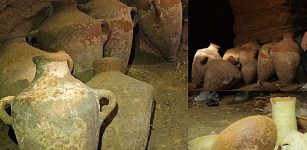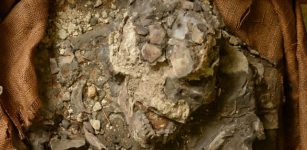Mysterious Huge Megalithic Complex Of 500 Stones Discovered In Spain Could Be One Of The Largest In Europe
Conny Waters - AncientPages.com - A fascinating archaeological discovery has been reported from Spain, where scientists have come across a huge megalithic complex of 500 stones. Archaeologists say the prehistoric site could be one of the largest of its kind in Europe.
The remarkable ancient site is located in the Huelva province in Southern Spain on the border with Portugal, near the Guadiana River. Spanning some 600 hectares (1,500 acres), the land had been earmarked for an avocado plantation.
The prestigious magazine ‘Works on Prehistory’, of the Higher Council for Scientific Research (CSIC) publishes an investigation by the UHU (Huelva) on Torre-La Janera
But before granting the permit, the regional authorities requested a survey in light of the site's possible archaeological significance and revealed the presence of the stones.
"This is the biggest and most diverse collection of standing stones grouped together in the Iberian peninsula," said Jose Antonio Linares, a researcher at Huelva University and one of the project's three directors.
Linares explained that the oldest standing stones at the La Torre-La Janera site were likely erected during the second half of the sixth or fifth millennium BC.
"It is a major megalithic site in Europe," he said.
"At the site, they found a large number of various types of megaliths, including standing stones, dolmens, mounds, coffin-like stone boxes called costs, and various enclosures.
"Standing stones were the most common finding, with 526 of them still standing or lying on the ground," said the researchers in an article published in Trabajos de Prehistoria, a prehistoric archaeology journal in the Iberian Peninsula.
The height of the stones was between one and three meters (3-10 feet)," the AFP reports. At Carnac in northwestern France, one of the world's most famous megalithic sites, there are some 3,000 standing stones.
As previously stated on AncientPages.com, "millennia ago, unknown Neolithic builders erected gigantic stone blocks on coastlines ranging from the Orkney Islands to far away in Jordan.
Examples of megaliths are found in almost all western European countries, in Africa, Spain, Palestine, on the northern shore of the Black Sea, the Arabian Peninsula, and even in Tibet.
Was this a coincidence that this almost worldwide megalithic project started and was completed in the distant past? Why were they set up at that time? Where was the cradle of the culture that made this project successful?" 1
"There is an overland trail of megalithic structures, which runs from the south of France to the English Channel. Was it a shortcut for the old maritime trade route which had to go round the Iberian peninsula?
Carnac stones. Credit: Jackogamer - CC BY-SA 3.0
This theory fits well into the picture of the colonization of Europe by people of the megalithic culture. It is also reinforced by the fact that in Carnac in Britany there are rows of stones that are identical to those in Gezer in Palestine and that Egyptian pearls were found in the megalithic graves in Ireland." 2
Carnac - with over 100 monuments, which include burial mounds, stone tombs, enclosures, and linear arrangements of menhir - is the site of the largest concentration of megalithic monuments in the world.
The discovered megalithic complex in the Huelva province can help scientists shed some light on the history of these prehistoric sites.
One of the most striking things was finding such diverse megalithic elements grouped together in one location and how well preserved they were, said Primitiva Bueno, co-director of the project and a prehistory professor at Alcala University near Madrid.
"Finding alignments and dolmens on one site is not very common," she told AFP.
"Here you find everything all together: alignments, cromlechs and dolmens and that is very striking," she said, hailing the site's "excellent conservation."
Side view of a menhir and stone platform at La Torre-La Janera megalithic site near Huelva. Credit: Huelva Información
An alignment is a linear arrangement of upright standing stones along a common axis, while a cromlech is a stone circle, and a dolmen is a type of megalithic tomb usually made of two or more standing stones with a large flat 'capstone' on top.
Most of the menhirs were grouped into 26 alignments and two cromlechs, both located on hilltops with a clear view to the east for viewing the sunrise during the summer and winter solstices and the spring and autumn equinoxes, the researchers said.
Many of the stones are buried deep in the earth.
They will need to be carefully excavated with the work scheduled to run until 2026 but "between this year's campaign and the start of next year's, there will be a part of the site that can be visited," Bueno said.
Written by Conny Waters - AncientPages.com Staff Writer
Expand for references






















